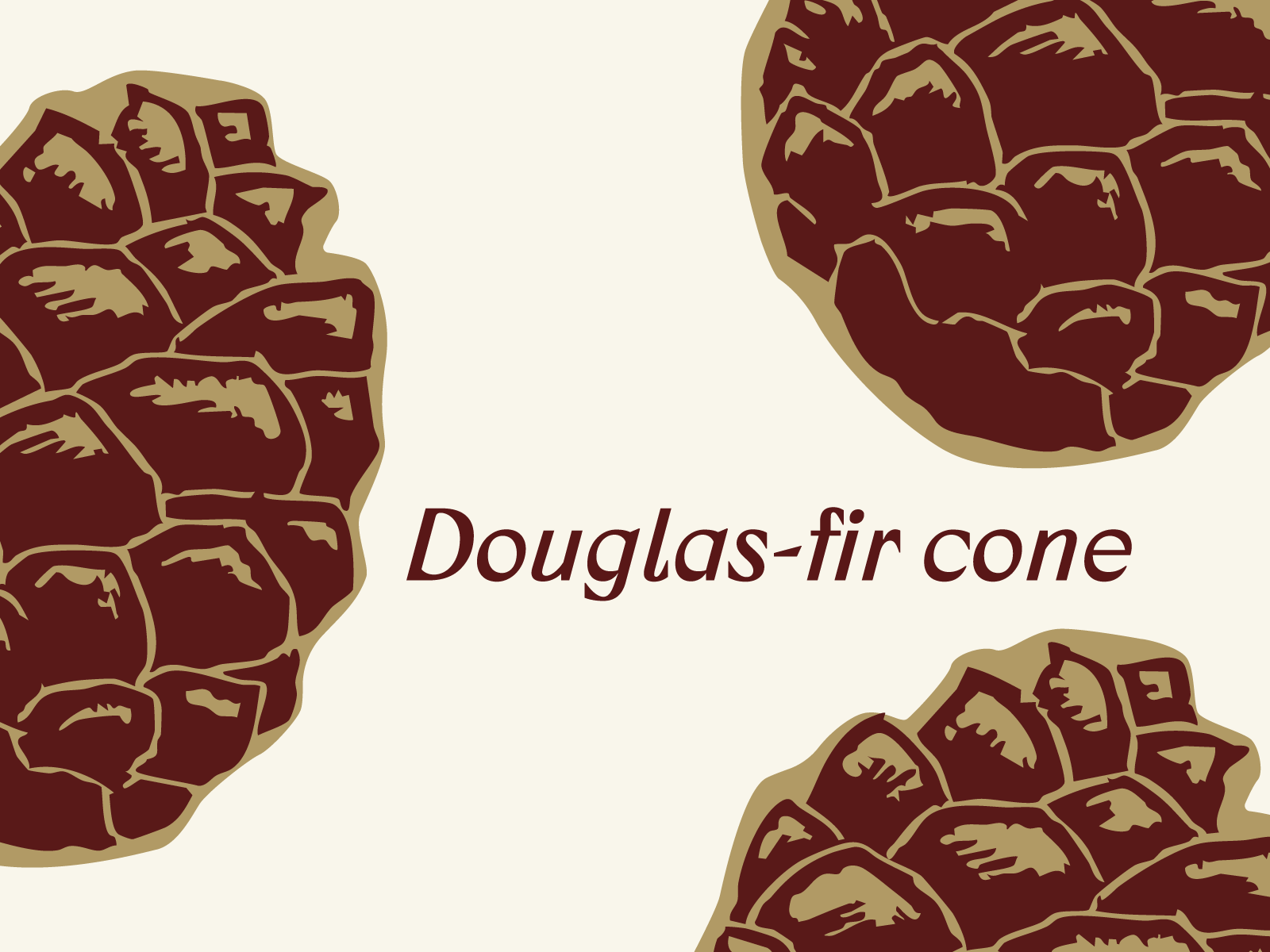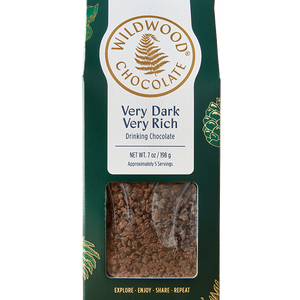Wildwood® Brand Elements: Douglas-fir cone

Aren’t all tree cones (...you know, the seed pods) called “Pine Cones”? The answer is No! All species of conifer trees use cones of various shapes as seed packets, but not all conifers are Pine trees, hence not all cones are “Pine Cones.” In fact the cone designs found in Wildwood’s alluring caramel and chocolate product and packaging are the Douglas-fir cone. Why do we care? Because the inspiration for our designs are the forests in our own back yard on the Wildwood Trail and which species is native to those forests? The Douglas-fir!
As our Trillium Flower blog highlighted, part of what we find most awe inspiring about Portland’s Wildwood Trail are the symbiotic companion relationships between the forest’s plants, soil, and animals. An unexpected and delightful example of these relationships is that between Douglas-fir trees and truffles. Yes, those truffles (we mean the mushrooms)! The trees pass nutrients and sugars to the fungus, and the truffles pass micronutrients to the tree that the tree cannot get itself, which supports the tree’s capacity to flourish while competing for resources with the trees around it. Next time you find yourself walking the path of the mossy undergrowth near Douglas-firs, trust that there may be truffles nestled just under the surface, thriving cozily in relationship together with the trees.
Douglas-fir cones, when seeded, are known for having iconic paperlike “bracts” that extend beyond the cone’s scales. Bracts are …. While there is no doubt a scientific explanation, how these bracts came to be is also regaled in folklore. And…we like the folklore version - it’s cute (kinda like our caramels).
Legend has it, a forest fire broke out and a mouse, looking for refuge from the flames, frantically searched for a place to hide until the fire had passed. Keen on higher ground, the mouse asked a Western Hemlock for respite and was denied. Next, the mouse asked a Big Leaf Maple, but was also denied shelter. Finally, the tiny mouse found itself in front of one of the largest trees in the world — the Douglas-fir. The tree invited the mouse to take refuge in its canopy and the mouse scurried up the trunk, tucking itself away inside one of the tree’s Douglas-fir cones. The mouse’s hind legs and tail were still visible from beneath the cone’s scales, giving the cones their signature three prong characteristic. Heartwarming legend or not, to this day Douglas-firs provide shelter for mice, voles, shrews, porcupines, and western spotted owls among many other species, some of which live their entire lives in the tree’s canopy.

In addition to the delectable and sweet symbiotic relationships of Douglas-firs and surrounding organisms, native populations have cultivated and maintained relationships with the trees for centuries. Members of the local Pacific Northwest Quinault, Cowlitz, Skagit, Lummi, Klallam, and Swinomish nations utilized the trees for firewood, tools, building materials, and medicine.
We are enchanted by the relationships and folklore surrounding the Douglas-fir tree and its cones and are honored to feature their cones in our lusciously smooth caramels, delicious chocolate bars, and decadently rich drinking chocolate. Can you spot all of the places? Explore. Share. Enjoy. Repeat.®
https://www.flickr.com/photos/12567713@N00/5606447150/
https://www.treespnw.com/resources/2018/5/2/yay-cones-on-douglas-firs-this-year
https://roseandemerald.com/of-mice-and-men-and-douglas-fir-trees/
https://www.nps.gov/articles/000/douglas-fir.htm
https://www.historylink.org/File/23219
https://extension.oregonstate.edu/catalog/pub/em-9369-oregon-native-edible-truffles



